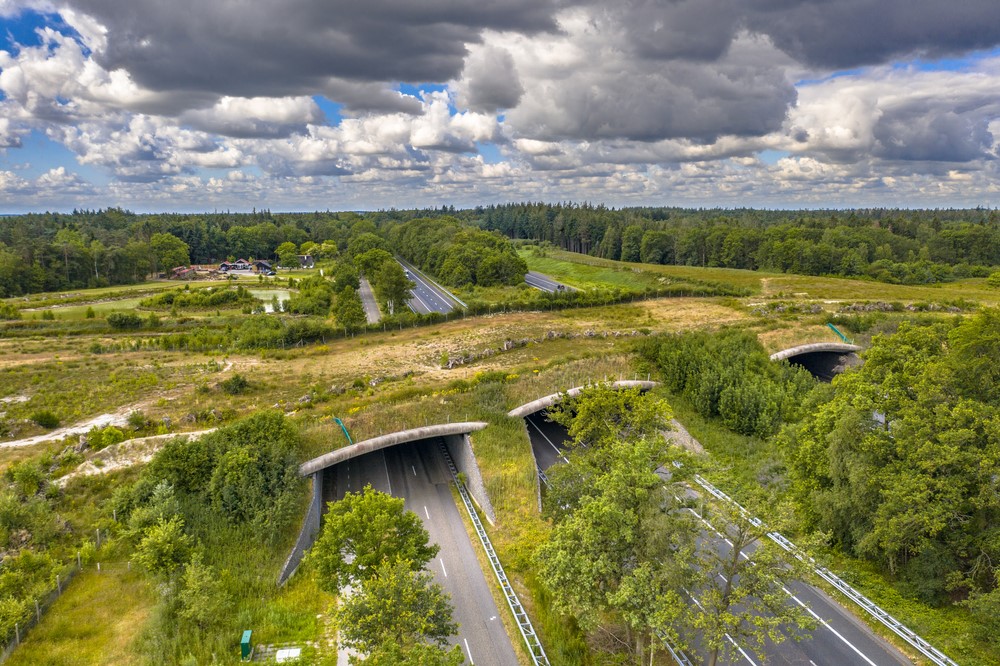‘Nature networks’ programme

Ecobridge (Shutterstock)
Details
...With the Nature Networks programme, INBO aims to support research for the development of a robust and coherent nature network in Flanders, aligned with the networks in neighbouring regions. This contributes to the strategic objective of more and better nature set out in the Environment Policy Memorandum and is in line with regional, national and international ambitions.
The Nature Restoration Law sets binding targets for the conservation and restoration of European protected habitats and species, for which a strong nature network is essential. The programme focuses on both nature cores and ecological connections in both terrestrial and aquatic environments.
The central question in the Nature Networks programme is to what extent viable populations of protected and typical species can occur in nature areas. To this end, we investigate population size and structure, habitat quality and environmental pressures, based on data from biotic and abiotic monitoring networks and citizen science.
We build on expertise in population and landscape ecology and test population data against policy objectives, including genetic analyses where necessary. Based on EU criteria, we substantiate the favourable reference area (FRA) for habitat types and the required quality and quantity of habitats for species, including at the local level.
We link habitat quality to environmental pressures and analyse the influence of landscape ecological processes and edge effects, determined by the spatial structure of nature cores. Through scenario modelling, we explore options for nature target allocation as input for local nature restoration plans.
In order to achieve a robust nature network, nature areas must be functionally connected to each other. This increases resilience to disturbance and climate change. Within the programme, we investigate the connectivity requirements of species, based on land use and dispersal capacity.
We study how corridors can best be designed to support a wide range of species. We analyse barriers, formulate solutions for migration bottlenecks and evaluate the effectiveness of defragmentation measures, such as fish ladders or the modification of weirs and pumping stations.
Processes such as (re)meandering, lateral river connection and e-flows are also considered.
For mobility bottlenecks, we provide scientific support to the Flemish Action Programme for Ecological Defragmentation (VAPEO). Where possible, we document the effectiveness of measures through genetic exchange between subpopulations.
A robust nature network not only supports protected species and habitats, but also offers important societal added value. We calculate the socio-economic impact and the ecosystem services provided by the network. In doing so, we identify how linkage opportunities with initiatives such as the Blue Deal, nitrogen remediation, forest expansion, parks, Natura 2000 and climate adaptation and mitigation can be maximised, in line with the policy document.
| Status | Running |
|---|---|
| Actual start/end date | 01/12/2024 - 31/12/2029 |
Teams
- Genetic Diversity
- Nature & Society
- Management Team
- Biotope Diversity
- Landscape Ecology and Nature Management
- Species Diversity
- Datamanagement
- Own Capital INBO
- Estuaries
- Environment and Climate
- Aquatic Management
- Nature Report and Advice Coordination
- Monitoring Programme for the Natural Environment
INBO Research theme(s)
- Protected nature
Participants
Toon SpanhoveTim Adriaens
Veronique Adriaenssens
David Buysse
Karen Cox
Lode De Beck
Luc De Bruyn
Kris Decleer
Joris Everaert
Lisa Lo Bue
Dirk Maes
Patrik Oosterlynck
Ine Pauwels
Johan Peymen
Kurt Sannen
Maarten Stevens
Francis Turkelboom
Sylvie Van Damme
Andy Van Kerckvoorde
Jeroen Vanden Borre
Floris Vanderhaeghe
Nicolas Vanermen
Carine Wils
Karen Wuyts
